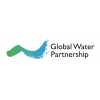Indonesia
Related Content
Article
Monitoreando la escorrentía mediante datos de observación de la Tierra
Translated by Isabel Zetina
Cuando la lluvia cae sobre la Tierra, el agua empieza a moverse y a fluir cuesta abajo a través de alcantarillas y ríos en forma de escorrentía. La escorrentía es extremadamente importante para recargar las masas de agua de la superficie y las aguas subterráneas. Además, la escorrentía modifica el paisaje por acción de la erosión. Es una parte integral del ciclo del agua (Earth Science Data Systems 2021).
Monitoreando la escorrentía mediante datos de observación de la Tierra
Translated by Isabel Zetina
Cuando la lluvia cae sobre la Tierra, el agua empieza a moverse y a fluir cuesta abajo a través de alcantarillas y ríos en forma de escorrentía. La escorrentía es extremadamente importante para recargar las masas de agua de la superficie y las aguas subterráneas. Además, la escorrentía modifica el paisaje por acción de la erosión. Es una parte integral del ciclo del agua (Earth Science Data Systems 2021).
Event
Map
Click on any of the highlighted countries to retrieve further information.











